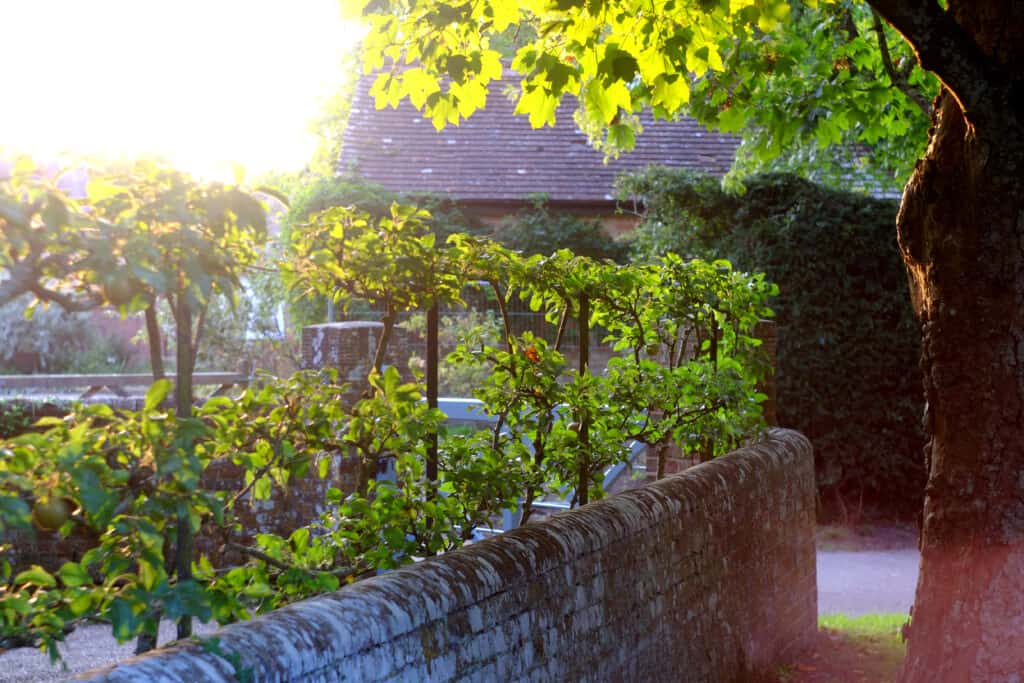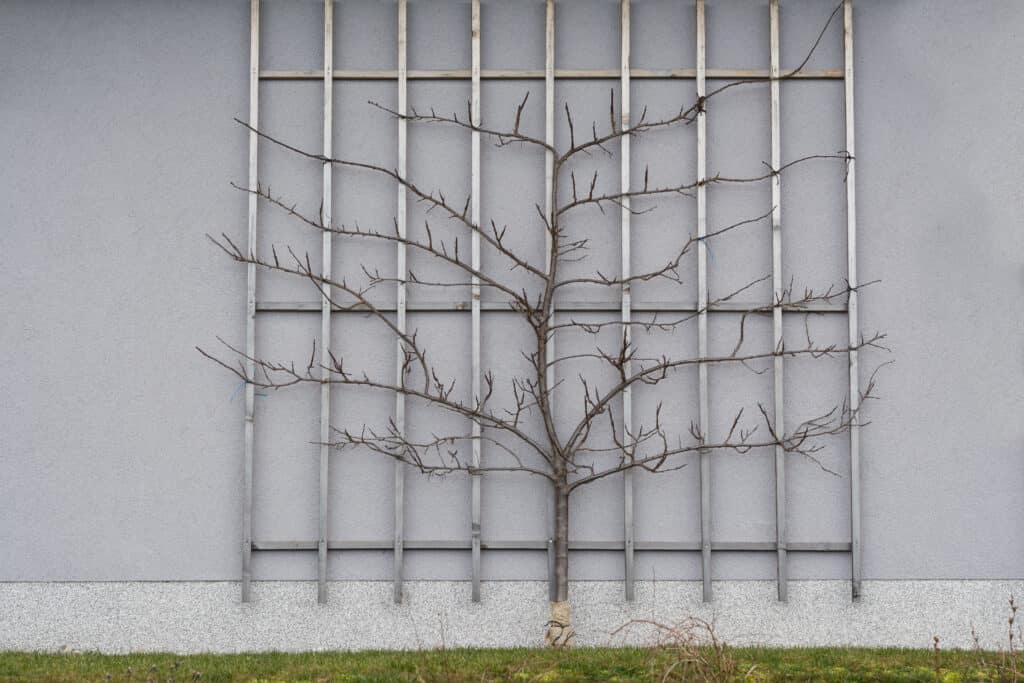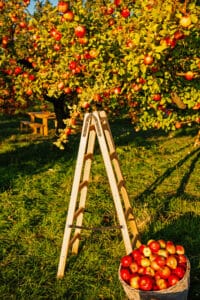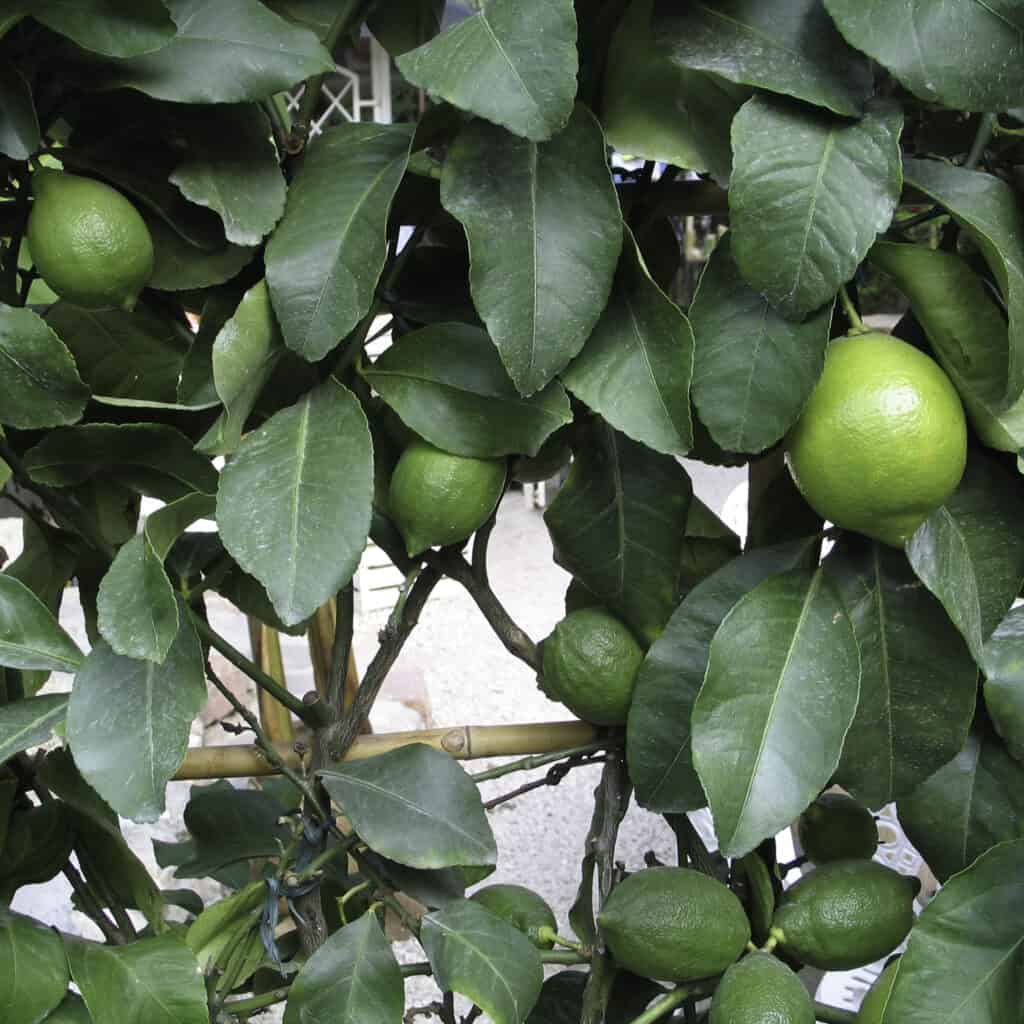
Planning the home fruit garden requires a bit more future-thinking than the vegetable garden. Most vegetables are annuals or biennials and spend just one or two seasons in the garden. Most fruits are trees or shrubs and live for 10 to 50 years or more.
The first consideration in planning an edible garden—either fruit or vegetable—is to make a list of what you like to eat. Grow what you and your family like to eat. Make a list. Then estimate how much of each crop you will eat fresh, cooked, or preserved. Estimating the yield of each plant will help you determine how much of each crop you should plant.
Size of the Fruit Garden

The size of your garden will determine how much fruit you can grow.
- Soft fruits which include strawberries, blueberries, and raspberries require little more than a planting bed 3 feet wide and 6 to 10 feet long, perhaps less. A strawberry plant will be in the garden for three years; a raspberry or blackberry will live 5 to 10 or more years; a blueberry will live 40 or 50 years.
- A dwarf or trained fruit trees such as an apple or pear will require about 4 feet by 4 feet in the garden. A semi-dwarf apple tree will require about twice that space. Standard fruit trees grow much larger—25 feet by 25 feet or more; they may be too big for a home garden. A dwarf or semi-dwarf fruit tree will live 15 to 20 years; a standard fruit tree will live 40 to 100 years depending on the variety.
- A fruit tree trained as a column may require a space as small as 3 feet by 3 feet. Fruit trees that fruit on spurs such as apples and pears are well suited for growing columnar.
- Many fruit trees can be grown as cordons or espaliers; they might require a planting bed against a post, wall, fence, or house just 3 feet by 3 feet or 3 feet by 6 feet or so. Apples and pears are well suited for cordons and espaliers. Plums and cherries also can be trained to a trellis or espalier.
- Besides space, time is a consideration when planting fruits; most soft fruits will bear fruit the same year or the spring after they are planted. A young fruit tree will bear fruit in three or four years; a standard fruit tree may require five or six years to bear fruit. (Of course, many fruit trees, once they begin bearing fruit, will continue to do for 40 or 50 years or more.)
Site and Soil for Growing Fruit
- Plant soft fruits and fruit trees where they will get a full day of sun, 8 hours or more is optimal.
- Plant fruits in compost-rich, loamy soil that is deep and well-drained. Avoid planting fruits where water sits after a rainstorm. Fruit tree roots grow deep when the soil is loamy and trees are watered deeply. Deep roots support strong trees.
- Plant fruits where they are sheltered from a prevailing breeze or wind. A breeze can suck moisture from leaves and fruit; wind can do the same and even break branches.
- Avoid planting fruits in low spots where cold air and frost can collect. Cold air and frost can damage or kill flowers in spring and slow ripening late in the season.
- Access your garden space before planting. Decide where fruits will grow best and be sure there is room for vegetables as well.

Spacing Plants in the Fruit Garden
- If you live where summers are cool, plant fruits near walls or buildings that can collect solar heat during the day and radiate the heat back out to the garden at night. A south-facing wall will keep fruits warm and productive in gardens that tend to be cool in summer.
- If you live where spring temperatures vacillate; warm one day and cold the next, plant fruits on the north side of a building or wall where temperatures remain consistently cool until spring has fully arrived and temperatures warm evenly. Avoid planting in spots that may warm one week and cool off the next; wide temperatures variations can damage or kill fruit flower buds in spring (and cause uneven ripening in summer).
- Plant fruit trees where other fruits and vegetables will not grow too close. Leave the ground under fruit trees bare except for a thick mulch of aged compost or leafmold. Do not make fruits compete for water and nutrients. Plant fruit trees in their own garden or to the side of the vegetable garden. Deep-rooted fruits trees should be irrigated separately from shallow-rooted vegetables. Mulching will keep weeds down under fruits. Avoid mechanical cultivation of weeds near fruit trees; you might disturb or harm the roots.

Space Saving Growing Methods
- Consider space-saving fruit growing methods such as cordons, espaliers, stepovers, single-stem or columnar trees, containers on plant dollies that are easily moved, and hanging baskets.
- Cordon fruit trees grow on a single stem or trunk with short fruiting laterals branches commonly growing at 45-degree angles from the trunk; fruits grow at picking height. Cordons are often free-standing or supported by wires.
- Espaliered fruit trees also grow on a single trunk, but branches are usually trained at right angles from and grow horizontal to the ground. Espaliers can be supported by a trellis or wires often against a wall or fence.
- Step-overs are small fruit trees with low lateral branches trained to a wire at knee height or lower. Stepovers are often placed as edging around planting beds.
- Columnar fruit trees take little but vertical space in the garden. Apples and pears can be trained to a single-stem or columnar form; fruits on short spurs grow the length of a single-trunked columnar tree. You can grow 4 or 5 different columnar fruit trees in a space just 10 by 10 feet.
- Container grown fruits placed on heavy-duty plant dollies can be wheeled across patios and walkways to catch the sun in small spaces. They can also be wheeled indoors or under overhangs when frost threatens.

Stepped Planting
- Plant fruit trees and rows of fruiting brambles where they will not cast shadows on other growing crops. Plant large fruits to the north of the garden where shadows will not fall on other edible crops—unless you want them to shade shade-tolerant plants such as lettuce and leafy greens, mint, and rhubarb.
- Use a stepped planting method. Place standards (which grow to 20 feet tall or taller) to the north end of the garden then place semi-dwarf trees (which grow 12 to 15 feet tall) directly to the south of the taller trees, then plant dwarf trees and large bush fruits (which grow 6 to 10 feet tall). Next, place espaliers of hard fruits such as apples or pears, then cordons and trellises of soft fruits such as grapes, then small bushy soft fruits such as currants and raspberries. Finally, site the lowest growing fruits such as strawberries to the far southern end of the garden where they will get plenty of sunshine. This is a stepped planting method from the tallest growing to lowest growing with the tallest plants to the north and the smaller ones to the south.
Planting Microclimates
- Use the microclimates in your garden. Most gardens have at least two or three different microclimates–spots that are warmer or cooler, that are sunnier or shadier, where the soil is drier or wetter than other parts of the garden. Grow a peach tree in the warmest and sunniest part of the garden; grow an apple tree in a cooler spot. Warm-spots will usually be south-facing and close to a wall or near a patio. Dry spots will often be on the far side of a wall or fence that breaks the force of wind and rain.
Choosing Fruits for Your Climate
- Make a list of fruits you and your family like to eat. Those should go to the top of the list of fruits to grow in your garden.
- Make sure the fruits you choose to grow will grow in your climate. Know which USDA growing zone you live in and which fruits can grow in that zone.
- Fruit trees that are native to cool climates such as apples, pears, plums, and cherries and soft fruits such as blueberries, raspberries, blackberries, gooseberries, and currants will grow in most temperate regions; some cultivars will even grow in warm regions.
- Fruits who are native to warm Mediterranean climates such as peaches, nectarines, apricots, citrus fruit, melons, and grapes will thrive where winters are mostly mild.
- Fruit trees that are native to subtropical and tropical regions such as avocadoes, guava, and papaya, for example, grow outdoors only where winters are very mild and freezing weather never threatens.
- If the fruit you want to grow does not grow naturally where you live, your only alternative is to provide an artificial environment in a greenhouse or plastic hoop house that is warmed by solar, gas, or electricity. Consider the extra cost of warming that space.

Fruits That Need Cold
- Check to see if the fruit you want to grow needs to go dormant in winter. Winter dormancy helps some plants including many fruit trees and bushes rest and conserve energy for the next growing season. Some fruits require chill hours. Chill hours are cumulative hours of temperatures between 34° and 48°F (called chill hours); these hours are needed in order for some fruit trees to flower and set fruit in spring. Some apples require 900 chill hours in order to flower and set fruit; if you live along the Gulf Coast or in southern California, you may not have enough chill hours to grow the variety you want to grow. Check at a local garden center or the nearby Cooperative Extension Service to be sure the fruit variety you want to grow will grow in your garden and if winters are cold enough for trees to go dormant.
- If the climate or winters are too warm or too cold to grow the fruit you want to grow, don’t give up right away. Most fruits include varieties and cultivars that can grow in cooler or warmer regions than other varieties of the same fruit. Many cultivars have been bred to grow in regions they are not native to if the growing method and conditions and microclimates are right. There are peaches, melons, and grapes that will grow in New England and there are apples that will grow in Florida. Check the growing requirements of specific varieties before you decide a fruit won’t grow where you live. There are dozens and dozens of varieties of most fruits.
Containers for Tropical Fruits
- Tender subtropical and tropical fruits can be grown in containers rather than in the open garden. Figs and citrus are good choices for growing in containers. Fruits that won’t tolerate frost can be grown in containers and moved indoors or undercover in winter; they can be moved back to the garden in summer. Choose dwarfing varieties if you grow fruit trees in containers (use an all-purpose loam-based potting mix with horticultural sand added for good drainage).
Pollination and Self-Fruitful Fruits
- Know if the fruit variety you want to grow can set fruit on its own or if it needs a pollinator, a second tree or plant of the same or different variety to successfully pollinate and set fruit. If space is limited choose a self-fruitful variety that does not need a partner.
- Also, if space is tight, choose a single-trunked tree that has several varieties of fruit grafted to one rootstock. One grafted plant may have several different apple or cherry varieties growing together. Grafted plants commonly include varieties that can help pollinate one another.
- Look over the fence or around the neighborhood to see if similar fruit trees to the one you want to grow are growing nearby; honeybees or other pollinators can travel over the fence and around the neighborhood from one plant to the next to aid pollination.

Planning for Harvest
- Choose fruiting plants that are easy to harvest. Don’t grow a 25-foot-tall standard size apple if you don’t have a tall ladder or are afraid of heights. Instead, choose a semi-dwarf or dwarf tree that is easy to harvest by hand or with a fruit picker with your feet firmly planted on the ground.
- Know when the fruits you want to grow come to harvest. Some fruits are ready for harvest early in the season, some midseason, some late in the season. For a long harvest, for example, grow an early season apple tree, a mid-season variety, and a late-season variety. Grow June bearing, everbearing, and day-neutral strawberries for a continuous harvest from spring to fall.
- Know how the fruit from the plant you want to grow is used—fresh eating, cooking, or preserving. Some apples are best eaten fresh, others and best cooked or preserved. Choose varieties to match the use you have in mind. The same goes for pears and cherries.
Consult the Experts
- When in doubt check with a fruit expert at the Cooperative Extension office, a Master Gardener, a member of an amateur fruit growers group, or the fruit person at the nearby garden center. They will know which varieties grow best and are most popular with gardeners near you.
Also of interest:
Browse the Fruit Category for guides to growing most fruits or look up the specific fruit you want to grow in the Index.















